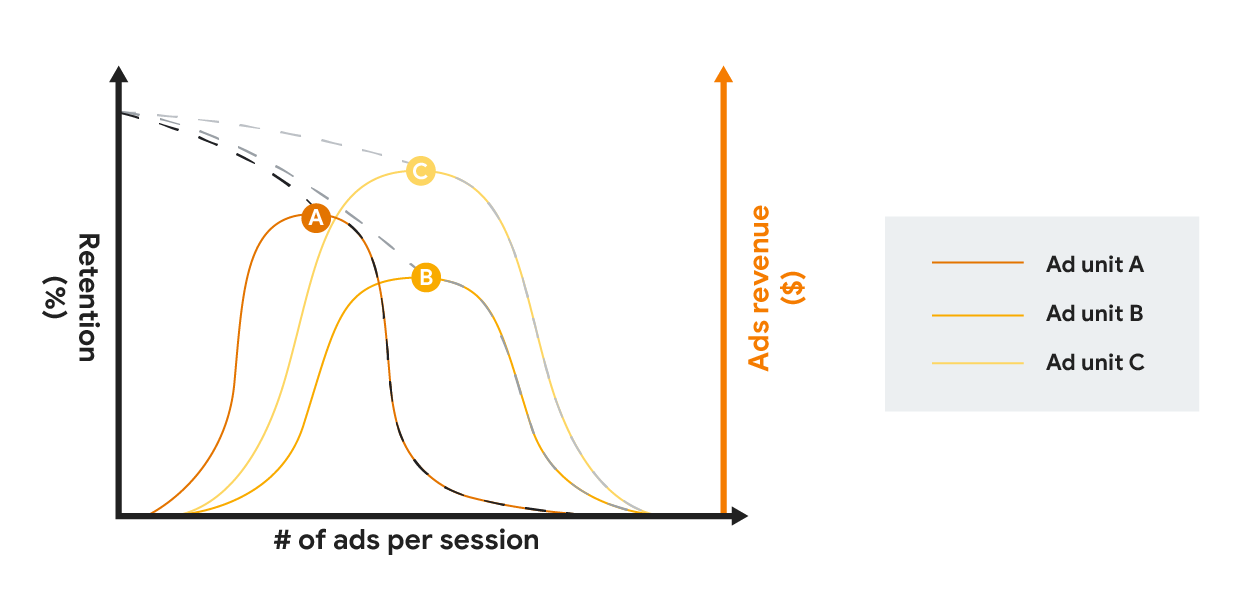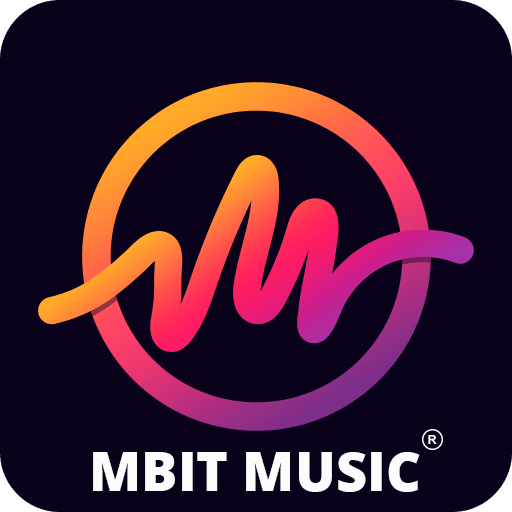Omówienie rozwiązania
Czym jest testowanie stosowania formatu reklamy?
Niezależnie od tego, czy aplikacja generuje przychody hybrydowe, czy przychody z reklam, wdrażanie różnych formatów reklam może być skomplikowane.
Nie wszystkie formaty reklam pasują do każdej aplikacji, a niektóre z nich mogą być skuteczniejsze w zależności od właściwości aplikacji. Podczas wdrażania nowego formatu reklamy możesz się obawiać, że wpłynie on negatywnie na wrażenia użytkowników lub ich utrzymanie. Możesz też zastanawiać się, czy po prawidłowym skonfigurowaniu nowego formatu reklamy uda Ci się zwiększyć przychody i zaangażowanie użytkowników.

Aby pomóc Ci w rozwiązaniu tych problemów, Firebase udostępnia narzędzia, które ułatwiają testowanie i podejmowanie decyzji o wdrażaniu nowych formatów reklam na podstawie danych:
Za pomocą Firebase możesz przeprowadzić testy A/B skuteczności nowego formatu reklamy na małej grupie użytkowników.
Możesz obserwować wyniki testu i sprawdzać w Firebase, czy nowy format reklamy jest skuteczniejszy od dotychczasowego.
Gdy będziesz mieć pewność, że zmiany przyniosą pozytywne skutki, możesz wdrożyć je dla większej liczby użytkowników jednym kliknięciem.
uzasadnienie biznesowe i wartość
Deweloperzy i wydawcy, którzy korzystają z narzędzi Google AdMob i Firebase do dodawania nowych formatów reklam, odnotowują średnio znaczny wzrost przychodów (do 10 razy*) przy jednoczesnym utrzymaniu stabilnego współczynnika utrzymania użytkowników.
*Wzrost przychodów na podstawie wyników 8 dużych wydawców w 2020 r.

|
Firma Pomelo Games korzysta z Firebase, aby zwiększyć przychody nawet o 35% bez utraty graczy. |

|
Qtonz używa Firebase, aby uzyskać 4-krotny wzrost przychodów z reklam i 190% wzrost ARPDAU. |
Wdrażanie rozwiązania
Aby wdrożyć to rozwiązanie, możesz postępować zgodnie z tym samouczkiem krok po kroku (poniżej znajdziesz jego omówienie).
Z tego samouczka, który składa się z kilku kroków, dowiesz się, jak za pomocą Firebase przetestować nowy format reklamy Google AdMob w aplikacji. W tym samouczku przykładowo testujemy reklamę pełnoekranową z nagrodą, ale te same kroki możesz powtórzyć, aby przetestować inne formaty reklam.
W tym samouczku zakładamy, że masz już w aplikacji komponent AdMob i chcesz sprawdzić, czy dodanie innego (z nowym formatem reklamy) wpłynie na przychody z aplikacji lub inne dane. Jeśli jednak nie używasz jeszcze w swojej aplikacji AdMob, nie ma problemu. Dzięki tej instrukcji możesz też sprawdzić, czy samo dodanie jednostki reklamowej do aplikacji wpływa na jej dane.
Usługi i funkcje używane w tym rozwiązaniu
|
Google AdMob Google AdMob umożliwia tworzenie wariantów jednostek reklamowych, które będą wyświetlane w aplikacji. Po połączeniu AdMob z Firebase AdMob będzie wysyłać do Firebase informacje o przychodach z reklam, aby ulepszyć optymalizację strategii reklamowej. Google Analytics Google Analytics zawiera dane o zaangażowaniu użytkowników, ich retencji i generowaniu przychodu, takie jak łączne przychody, przychody z AdMob, przychody z zakupów i wiele innych. Umożliwia też tworzenie list odbiorców i segmentów użytkowników. |
Firebase Remote Config Firebase Remote Config umożliwia dynamiczne zmienianie i dostosowywanie zachowania oraz wyglądu aplikacji w przypadku wybranych segmentów użytkowników – bez publikowania nowej wersji aplikacji. W tym samouczku użyjesz parametrów Remote Config, aby określić, czy nowa jednostka reklamowa będzie wyświetlana użytkownikom. Firebase A/B Testing Firebase A/B Testing zapewnia interfejs i infrastrukturę do przeprowadzania eksperymentów produktowych i marketingowych w aplikacji. Zajmuje się dystrybucją wariantów eksperymentu do użytkowników, a następnie przeprowadza analizę statystyczną, aby określić, czy wariant eksperymentu jest skuteczniejszy od grupy kontrolnej na podstawie wybranego kluczowego wskaźnika, np. przychodów lub retencji użytkowników. |

Omówienie samouczka rozwiązania
Przejdź bezpośrednio do samouczka krok po kroku
Użyj AdMob, aby utworzyć nową wersję jednostki reklamowej na potrzeby testów
Utwórz nową jednostkę reklamową z nagrodą w AdMob.
Zaimplementuj umieszczenie jednostki reklamowej w kodzie aplikacji.
Konfigurowanie testu A/B w konsoli Firebase
Określ podstawy testowania, kierowanie reklam i cele, które będą testowane.
Zdefiniuj warianty testowe i skonfiguruj parametr Remote Config, który będzie określać, czy nowa jednostka reklamowa ma się wyświetlać użytkownikom biorącym udział w teście.
Obsługuj wartości parametrów Remote Config w kodzie aplikacji
Użyj w aplikacji parametru Remote Config.
Wdrożyć logikę wyświetlania jednostki reklamowej na podstawie wartości parametru.
Rozpocznij test A/B i sprawdź jego wyniki w konsoli Firebase
Po rozpoczęciu testu i jego przeprowadzeniu przez kilka dni lub tygodni sprawdź w konsoli Firebase, czy test A/B wykazał wariant zwycięski na podstawie głównego celu testu.
Sprawdź wpływ wariantów na dane pomocnicze, aby mieć pewność, że nie powodują one niezamierzonych negatywnych skutków.
Podjęcie decyzji o wdrożeniu nowego formatu reklamy
Jeśli A/B Testing uzna, że wariant wyświetlający nowy format reklamy jest zwycięski, możesz zacząć wyświetlać ten format wszystkim użytkownikom objętym eksperymentem, wszystkim użytkownikom aplikacji lub podzbiorowi użytkowników.
Jeśli nie udało się jeszcze określić jednoznacznego zwycięzcy, możesz kontynuować eksperyment, aby zebrać więcej danych, lub zakończyć go, jeśli trwa już od dłuższego czasu i nie przynosi jednoznacznych wyników.

